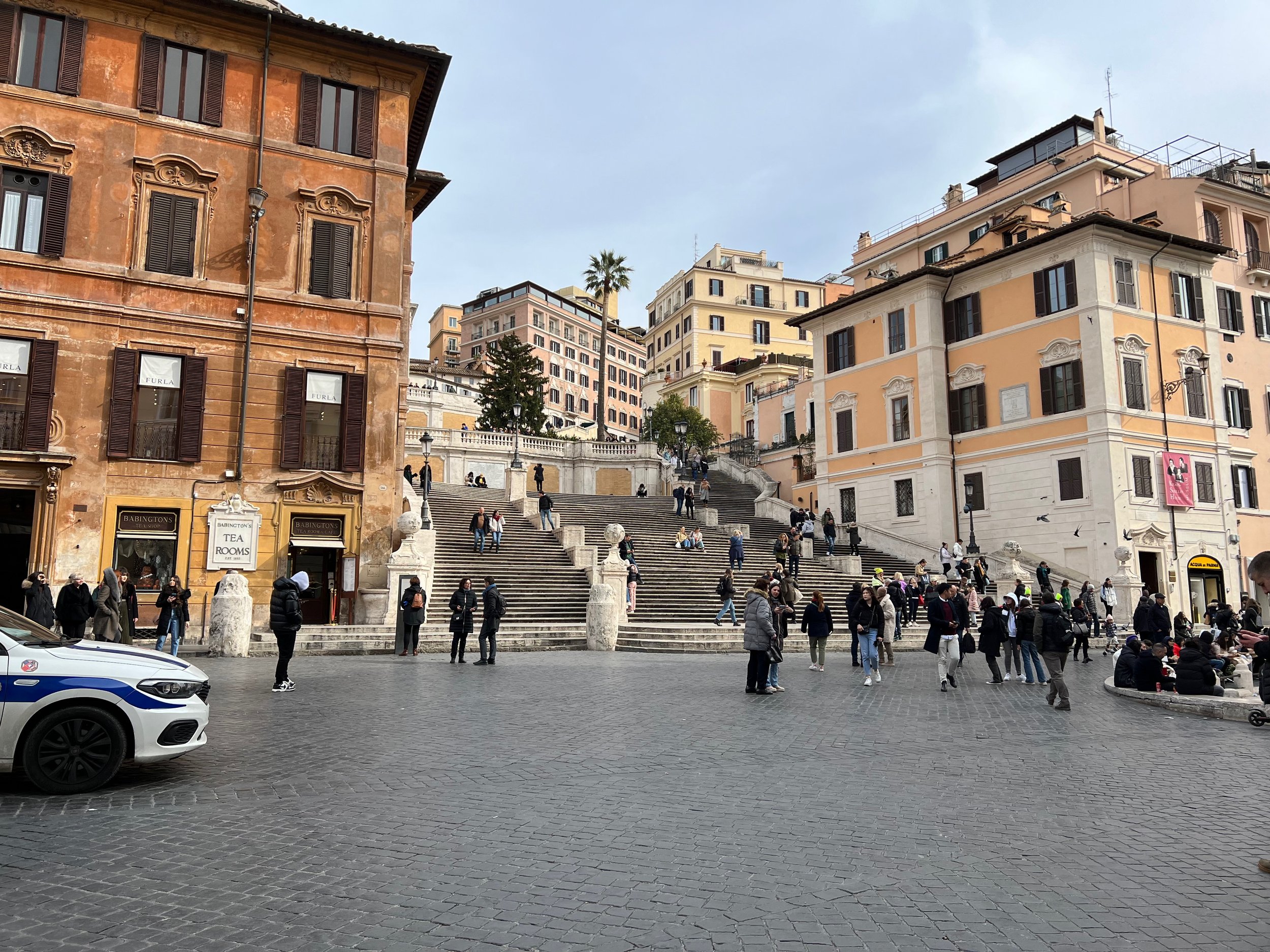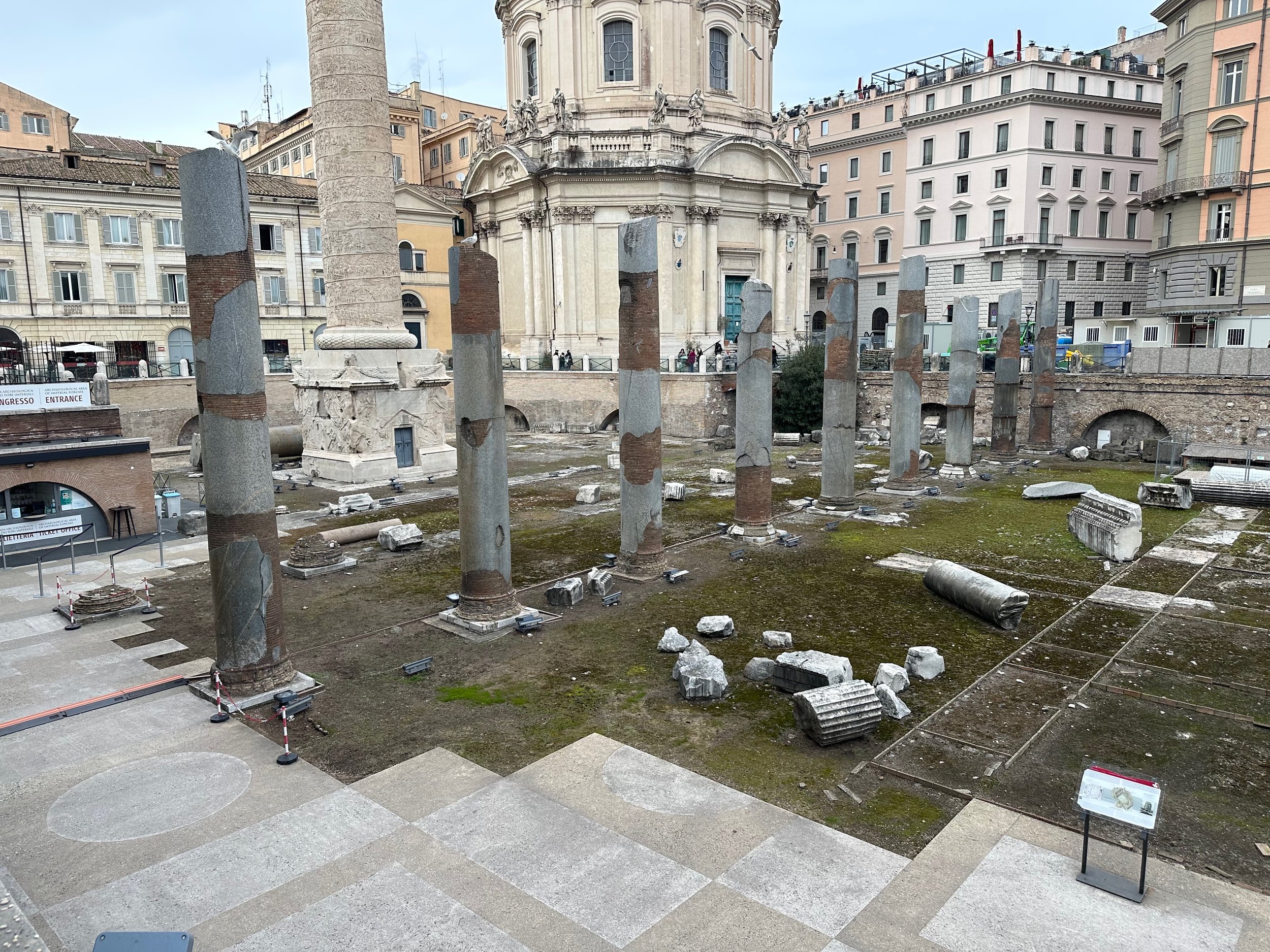Roaming Rome: A Quick Day-Long Love Affair with History
It’s been a long five years since we first visited Rome. When we initially set foot in this ancient city, we were steps away from the Colosseum, which thrilled me, but Kevin didn’t care for all the vendors that hawked their wares at every turn. It was our first Italian city to visit, and it did not disappoint. But it’s big and traffic can be wild, especially when crossing the street. I loved all the museums and the archeological ruins and architecture that took away my breath. We haven’t felt led to visit again until now.
Colosseum, Rome, Italy (2023)
We are in Assisi but need to visit Rome to get vaccinations for our upcoming trip to Egypt. Fortunately Rome is only a quick two-hour train ride away, so we buy tickets online and decide to make a day of exploring some of the special places in Rome that stole our hearts. Don’t think that it’s sufficient to see Rome in a day. You wouldn’t be bored if you spent a full two weeks or more biking through and examining all the gems hidden here. But when you only have a day, it can be fun to do a quick stop and wave to familiar sites and allow your heart to swoon for a few minutes before finding the next place that takes away your breath.
Here’s what we saw and why you should add it to your itinerary as well.
Spanish Steps. This is a great starting point because the Baroque steps give you a panoramic view over Rome. They are romantic and iconic. When you climb them, you’ll add your footsteps to those of artists and poets who used them as a central meeting place for over 300 years.
Piazza della Rotunda. This piazza that houses the Pantheon gets its name from the nearby church of Santa Maria Rotonda. Its centerpiece is the Fontana del Pantheon, which was built in 1575. Later, it was topped by the 1200 BC Egyptian obelisk that Pharaoh Ramses II commissioned for the Temple of Ra in Heliopolis, Egypt. It had been brought to Rome in ancient times at a shrine to the Egyptian god Isis and moved to multiple places throughout the city before finding its current home atop the fountain.It’s grand, and outside of the Egyptian obelisk, feels quintessentially Roman.
Pantheon. This former Roman temple was built on the site of an older temple built between 27 BC and 14 AD. It was rebuilt by the emperor Hadrian around 126 AD. Since 609 AD, it has functioned as a Catholic church. Its dome is the world's largest unreinforced concrete dome. The name, Pantheon, is translated roughly from Ancient Greek to mean, “devoted to all gods,” but no one is completely certain how it originally was used.
Sant'Ignazio Church. The exterior of this church will catch your eye, and once you enter, you are in for some surprises. This 17th century Baroque church has stunning frescoes on its huge ceiling. There is a mirror that allows you to see the decorations without having to crane your neck. The roof is flat, but it’s painted in such a way that it appears to be vaulted. There’s a decorated dome that’s also an illusion to hide that there wasn’t enough money to build a real dome.
Trevi Fountain. You can’t drink from it, but you can throw a coin over your shoulder and make a wish while you admire its stunning, grand Baroque detail. Built in 1762, its name, “Tre vie” is derived from the number three and street (Three Streets Fountain) because it was built at the intersection of Rome's then three most important thoroughfares. Seeing it in all its glory is pretty sublime and surreal.
Stolpersteine Holocaust memorials outside the Church of the Twelve Holy Apostles (Santi Apostoli). They’re not ancient, but these bronze “stumbling stones” do allow for you to take a moment to remember the Jewish Holocaust victims. Rome has 200 of these cobblestones throughout the city, and Europe has scattered over 22,000 of them.
Imperial Forum. This series of ancient public squares was built by Julius Caesar between 49 BC and 113 AD and were the center of the Roman Republic and of the Roman Empire. These flashy and impressive sites were constructed to show off the power of the emperors at the height of their power. In the 1930s Mussolini ordered an excavation to build over the mostly hidden ruins, and in the process inadvertently exposed much of what we see today. We strolled slowly past them, but if you have time, you can go in and explore in more depth. There’s a lot of history to see inside.
The Coliseum. It’s the granddaddy of sites in Rome. This 2,000 year old site of ancient gladiator battles is a mix between horror and architectural beauty. You’ll marvel that so much of it is still intact. It’s a symbol of the power of the Roman Empire and provides a window into the lives of ancient Romans. Its structure will astound you, and if you are able to, try as hard as you can to get a night ticket to see the underground and gladiator gates and walk on the arena floor.
Galleria Borghese. We highly recommend that you use a guide to give you information about the masterpieces in this museum. You will find works by Raphael, Bernini, Botticelli, Caravaggio, and Rubens. It’s smaller than the Vatican Museum, but some of the greatest artworks and sculptures ever produced are displayed here. You’ll need to book ahead, but it is worth it! Arrive 30 minutes early to the slot you choose on your ticket, get situated and note that you’ll have two hours to walk through the art gallery.Although it’s now owned by the Italian government, the private collection was originally accumulated by one man, Cardinal Scipione Borghese.The building that houses the collection was built in 1613, and there are extensive gardens to stroll through as well, if your legs can still handle it. You can do an audio guide as well as a small group tour, but we fully enjoyed the live tour (both times)!
Here’s what it cost for everything we did that day (excluding our vaccinations!).
€73.40 - round trip train on Trenitalia using Trainline for two adults
€5.50 - cappuccino and cornetto x2 at D’Angelo Bistrot
€83.00 - Hotel Maalot Cucina & Bar lunch with glass of wine, shared dessert and two expressos
€50.00 - Galleria Borghese guided tour (2 hours) with online service fee for two
======
€211.90 - TOTAL plus tips for both of us











